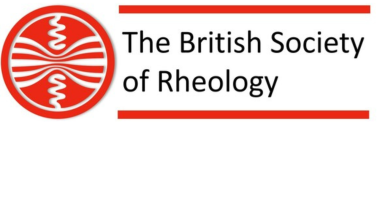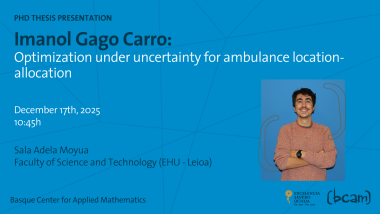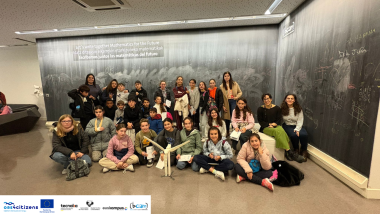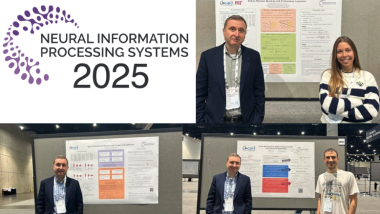Researchers from BCAM, ARAYA INC., The University Of Sussex, and The University Of Kyoto develop a new class of Artificial Intelligence models called CURVED NEURAL NETWORKS
- What if Artificial Intelligence could remember things not just well, but faster or more reliably? A new international study has introduced a novel type of AI memory, one that tackles the challenge not with more data, but with geometry.
- The study shows that bending the "space" in which AI "thinks" can create an explosive memory retrieval, an effect similar to a moment of clarity in the human brain.
- The research opens new paths for brain-inspired computing, neuroscience, and even next-generation robotics, offering tools to better understand memory itself. The discovery will undoubtedly contribute to the future of AI.
What if artificial intelligence could remember things not just well, but faster or more reliably? A new international study has introduced a novel type of AI memory—one that addresses the challenge not with more data, but with geometry.
A team of researchers from the Basque Center for Applied Mathematics (BCAM), Araya Inc., the University of Sussex, and Kyoto University has developed a new class of AI models called Curved Neural Networks.
Their findings, published in Nature Communications, show how bending the “space” in which AI “thinks” can create explosive memory recall—an effect similar to a lightbulb moment in the human brain.
Traditional AI systems rely on relatively simple connections—akin to one-on-one conversations. “But the human brain operates with rich, multi-way interactions, where many signals influence each other at once,” said Dr. Miguel Aguilera (Ikerbasque Researcher and Junior Leader at La Caixa in BCAM). To account for this, the team introduced curved geometry into AI models, allowing for more complex and lifelike memory processes—without extra computational overload.
The team’s Curved Neural Networks revealed three key features:
- Explosive Memory Recall – The system can readily jump to a stored memory, like flipping a switch.
- Self-Tuning Intelligence – The AI automatically adjusts its “focus” as it recalls, speeding up its response.
- Fewer Mistakes, or More Capacity – A single tuning parameter lets the system balance between memory power and accuracy.
“These properties are not hardcoded, but arise naturally from the curved geometry of the model,” said Dr. Pablo A. Morales at Araya Inc. This discovery could lead to AI systems that are more adaptive, efficient, and easier to understand—a major leap from today’s "black box" models that are powerful but hard to explain.
“It’s a compelling example of how geometry and physics can guide advances in intelligence—both natural and artificial.,” said University of Sussex Dr. Fernando E. Rosas. “This work opens new ways of thinking about how brains and machines may store and retrieve information efficiently.”
Prof. Hideaki Shimazaki, Associate Professor at Kyoto University, added: “What started as a simple idea—using curved geometry in neural networks— unfolded into a deeply collaborative journey. The discovery will undoubtedly contribute to the future of AI.”
The research opens new paths for brain-inspired computing, neuroscience, and even next-gen robotics, offering tools to better understand memory itself—whether in minds or machines.
Link to the paper: https://www.nature.com/articles/s41467-025-61475-w
DOI: s41467-025-61475-w
Related news
BCAM people
Former BCAM PhD Student Peter Angerman Wins British Society of Rheology Vernon Harrison Award
Women in Science




